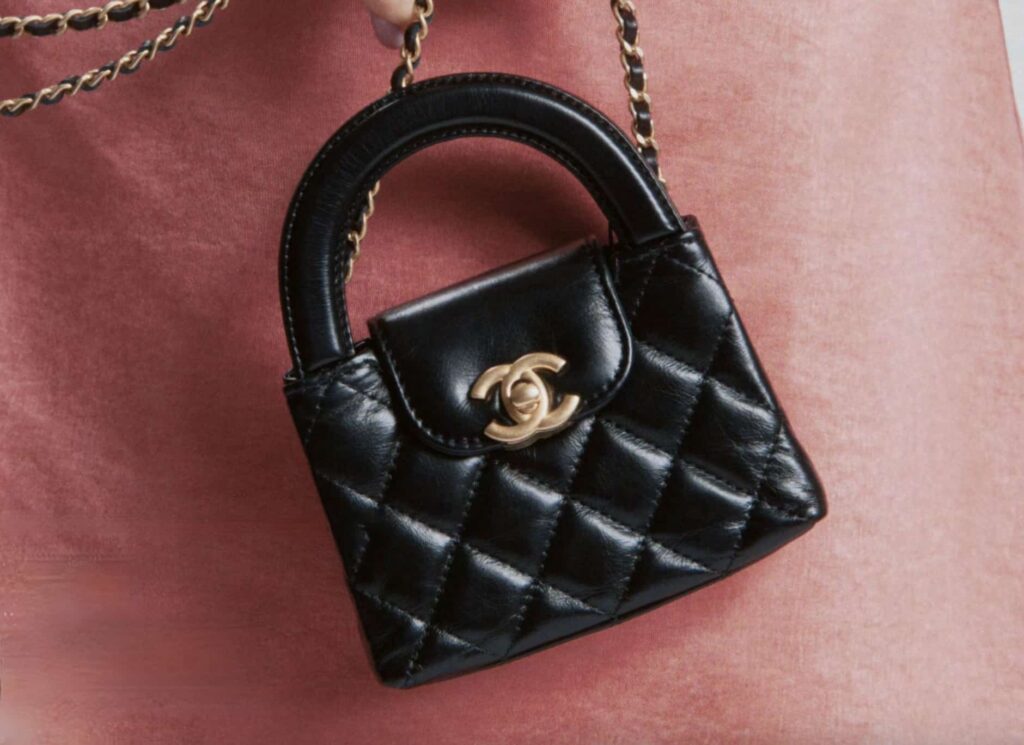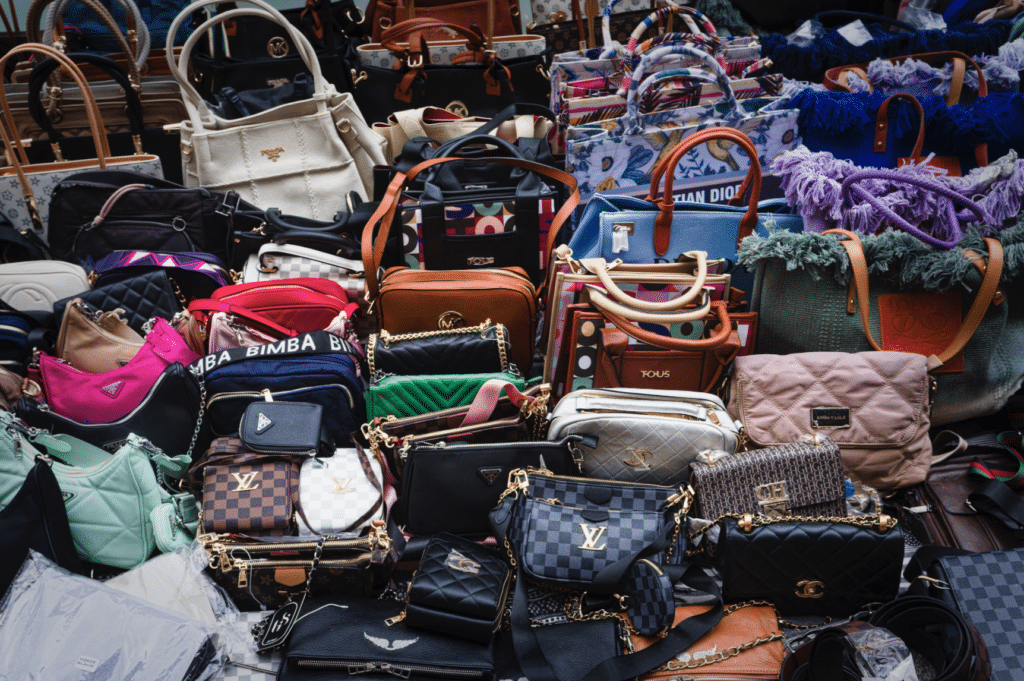
image: Gucci
Sixty-four fashion companies, ranging from mass-market giants like Zara, H&M, and Target to Kering, Reformation, Ganni, and adidas have vowed to do more. In particular, each of the fashion companies has outlined specific goals to increase the sustainability of their production over the next two years. Per WWD, “As part of an effort by the Global Fashion Agenda focused on sustainable and circular production in fashion, the companies have submitted ‘targets’ for increased sustainable design, garment collection, repurposing and the use of recycled textiles by 2020.”
The move comes on the heels of the Global Fashion Agenda’s call – at the Copenhagen Fashion Summit last year – for fashion brands and retailers to sign a commitment to accelerate the transition to a circular fashion system.
According to the Agenda, the four immediate Action Points to accelerate the transition to a circular fashion system, include: (1) Implementing design strategies for cyclability; (2) Increasing the volume of used garments collected; (3) Increasing the volume of used garments resold; and (4) Increasing the share of garments made from recycled post-consumer textile fibers.
The Global Fashion Agenda says that each of the signatories has set its individual target for 2020 with the minimum requirement of setting a target for 2020 on one or more of the four Action Points – all of which are viewable on the Agenda’s website. Of the individual companies that have declared their commitment to the Agenda’s call for brands’ commitment to accelerate the transition to a circular fashion system, a few stand out.
Kering

image: Gucci
Gucci, Saint Laurent, and Balenciaga’s parent company, Kering, is a noteworthy participant given its widespread dedication to sustainability across its roster of brands, which also include Stella McCartney (one of the leaders in this arena). For over five years, Kering has been setting its own internal targets for establishing and adhering to protocols for more socially and environmentally sustainable business practices.
Some of these targets – which are ambitious and predate those of almost any other luxury company – include eradicating PVC and other harmful chemicals from all product lines, increasing traceability and sourcing from European Union-based production systems to enable the use of higher quality skins with a lower environmental footprint, offsetting CO2 emissions, and eliminating various types of waste from its supply chain.
In regards to the Global Fashion Agenda, Kering has vowed to act on Action Points 1 and 4 by training “100% of the production and design teams on the ‘Kering Standards for raw materials and manufacturing processes,’ which include criteria on circularity,” and “identifying the most promising pre-and post-consumer raw material recycling technologies for luxury and scaling them up in the supply chain.”
Given Kering’s existing (and continued) dedication to sustainability, which is under the watch of Marie-Claire Daveu, who was appointed Kering’s chief sustainability officer and head of international institutional affairs in 2012, these appear to be very achievable goals.
Reformation

image: Reformation
Los Angeles-based Reformation has been hailed since its founding in 2009, for its dedication to making trendy, in-demand fashion that does not wreak havoc on the planet. As recently as last year, it took that a step further by tackling denim, what Reformation calls “the worst polluting type of clothing” on the planet. In addition to the use of insecticides to treat cotton, which is typically indigo-dyed – such dyes frequently result in runoff that pollutes nearby bodies of water, such as the Pearl River in Xintang, China – and woven to create denim, the average pair of jeans requires the use of 2,000 gallons of water.
In the case at hand, Reformation has opted for Points 2, 3 and 4, announcing that it will “increase the customer participation in our garment collection scheme RefRecycling to help collect and recycle 50,000 pounds of clothes,” “increase our resale and up-cycling of used garments to 150,000 items,” and allocate “10% of [its] fabric spend to fabrics made with recycled post-consumer textile fibers.”
Note: The specificity attached to Reformation’s goals – increase up upcycling to 150,000 items and recycle 50,000 pounds of clothes – bodes well for actually following through on its vow.
Tommy Hilfiger

image: Tommy
New York fashion industry staple brand Tommy Hilfiger is swiftly emerging as one to watch on an array of fronts, ranging from “it” capsules with Gigi Hadid to its relatively recent debut of collections created specifically for men, women, and children with disabilities, offering that you will otherwise be hard pressed to find within the fashion industry.
Tommy Hilfiger is upping the ante in terms of sustainability, as well it seems by opting to take part in the Global Fashion Agenda’s initiative, committing to Points 1 and 4, saying that it “aims to train at least 80% of our designers on circular design principles” and “aims to implement 3D design tools in at least 50% of our business divisions to facilitate real-time design feedback on circularity.” Moreover, Hilfiger vows to “use recycled post-consumer textile fibers in at least 70% of our business divisions, with the ambition to increase the recycled content year-on-year.”
Ganni

image: Ganni
Just recently brought under the LVMH umbrella by way of L Catterton, an LVMH-affiliated a private equity entity, Ganni is one of Scandinavia’s buzziest contemporary fashion brands. It has from the outset been run in accordance with the mindset that “we do not just want to change the face of fashion. We want to do our part to change the world,” and a significant part of that is a focus on “our aim of continuous reduction of our environmental footprint.” This, according to Ganni, includes the elimination of chemical substances in the production cycle and the reduction of energy use and CO2 emissions.
Note: LVMH, which owns Louis Vuitton, Christian Dior, Celine, Marc Jacobs, and Givenchy, among other brands, announced in September that it will invest more to improve its environmental credentials as fashion businesses seek to reassure shoppers who are increasingly drawn to eco-friendly brands. It has not opted in on the initiative at hand, however.
H&M

image: H&M
Another noteworthy entity on the list: H&M, which, says it has opted to tackle all four targets. Of particular interest should be Point 2, in connection with which H&M states, “We will increase the volume of collected textiles from the H&M brand’s garment collection scheme to at least 25,000 tons annually.” This is interesting given widespread reports that while the Swedish giant does, in fact, collection garments, it has taken to incinerating them, as opposed to recycling them, as promised.
You may recall that this past fall, H&M came under fire on more than one occasion for allegedly destroying 60 tons of recyclable garments, as revealed in a Danish television investigation. As we wrote at the time, if the network’s allegations are, in fact, true (and H&M says they absolutely are not), they could prove a significant blow to H&M, which has widely publicized its sustainability efforts, which include a “conscious” collection and widespread recycling efforts.
It is also worth noting that H&M was recently taken to task by labor rights organizations and the media, alike, for making grandiose promises then failing to live up to them. As Quartz noted in December, “H&M’s committed in 2013 to ensuring that the workers at its 750 suppliers in Bangladesh and Cambodia—which stitch 60% of its clothing—are paid a living wage by 2018.”
The publication further noted that the Clean Clothes Campaign, an international watchdog group for the garment industry, “has accused H&M of not doing near enough to achieve the goal it very publicly proclaimed—or at least, making it impossible to know what progress has been made.”
According to a statement from the Clean Clothes Campaign, “Over the past five years since declaring their living wage initiative, H&M has been notoriously opaque regarding their plans which has raised questions as to whether their promise was merely a publicity stunt to allay public concern about their fast fashion brand.”
Inditex

image: Zara
Much like H&M, Zara’s parent company Inditex – which recently came under fire after shopper in Istanbul found unusual tags affixed to the garments, which included pleas from Turkish workers, who say they have not been paid for working to manufacture the Spanish fast fashion giant’s garments and accessories – also vowed to implement all four Action Points by 2020. As for the likelihood of success, we will be keeping track.
In regards to H&M and Zara’s very ambitious goals (i.e, their promises to achieve all for Action Points by 202), and with the rampant greenwashing that takes place particularly in the realm of fast fashion (in large part to balance the harms that are widely associated with mass-market garment manufacturing in general but also to attempt to alleviate some of contention associated with the abuses that are particularly rampant in fast fashion manufacturing) especially in regards to sweeping promises of sustainability, it would likely be prudent to question to achievability of such sweeping vows.











